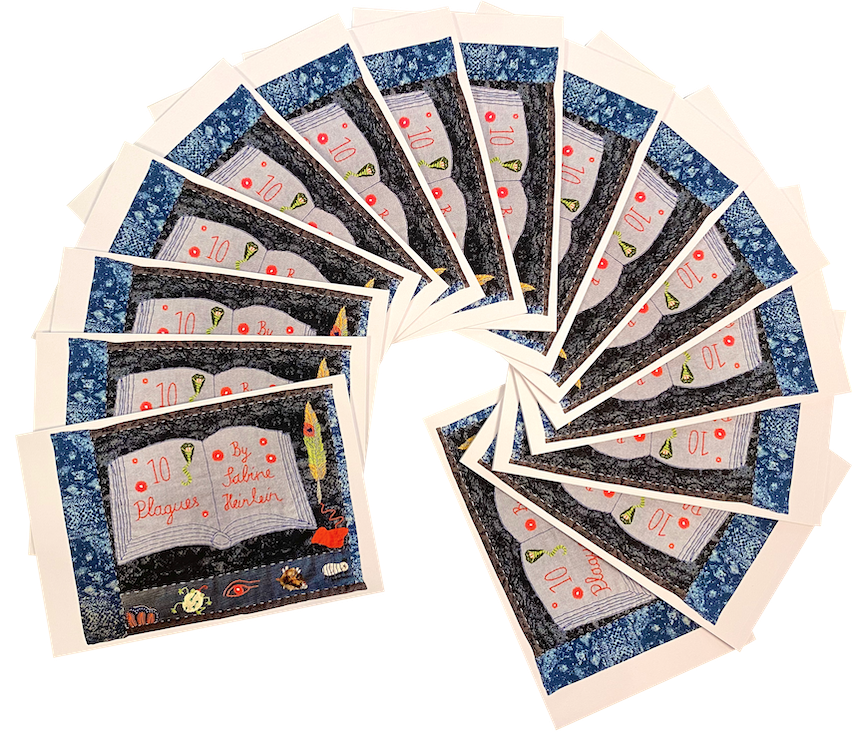Those of you who follow me on Instagram might have seen that I was working on a quilted book featuring the 10 plagues of Egypt. It might come as no surprise that I am telling the story from the perspective of the animals that were affected by the epidemics that struck Egypt during the time of the Exodus.
I decided to take this project one step further by making an actual, printed book depicting each individual panel, the pertaining Bible verses, as well an essay that talks about the science behind the 10 plagues of Egypt and my personal quilting philosophy. Here are just three pages from the book:
I was thinking long and hard to figure out which louse-infested animal to depict. The problem with lice is not only that they make you very, very itchy, but also that they are hard to find when you have a lot of hair because they are small and good at hiding. Alas, it had to be the poor Egyptian hairless cat that became infested with lice so you could see them. Lice infestations are actually quite common, particularly when creatures live in cramped, unhygienic conditions. As such, they are common in refugee camps, but also occur in relatively benign environments, such as elementary schools. This cat is made from an entirely louse-less old T-shirt that just happened to be a pale pink color that resembles the skin of some hairless cats. On the margin of this panel I stitched some hieroglyphs based on the formal writing system used in ancient Egypt. Can you guess their meaning?
All the cattle, sheep, chickens are dead. Scientists have speculated that the death of the livestock was caused by a zoonotic outbreak, such as Rift Valley Fever, the West Nile Virus, Rinderpest or a combination. Zoonotic diseases transmitted between species and passed on to humans have been common ever since humans started to farm animals for their meat. Rinderpest, for example, has caused intermittent outbreaks all over the world, killing an estimated 200 million cattle in eighteenth-century Europe alone. Above the dead animals floats the scarab, the Egyptian death beetle. Based on dung beetles, scarab jewelry was worn by the living as amulets and hung around mummies’ necks or sewn unto their chests. Sometimes, mummified scarabs were placed into the ears of the dead. They were thought to whisper the correct answers to the supplicants, so the questioning gods would send them to heaven, not hell.
That poor goat had the wits to climb the volcano during a fiery eruption and while a hailstorm raged. You’d hope that the Horus, a god that appeared in the form of a falcon and was deemed the protector of the pharaoh, would also protect the goat. The Horus’s right eye stood for the sun or morning star, symbolizing power, and his left eye for the moon or evening star, symbolizing healing. A famous temple in upper Egypt was dedicated to this falcon god. Now, is the Egyptian Horus going to save the goat? Probably not. All is lost. This panel is one of the few instances where I used a leftover scrap from a fabric I paid for. Interestingly, the blue and orange fabric, which I turned into a dress, has an African pattern, was made in China and sold at a store in Panama City. Talk about culture clashes!
If you’d like a signed copy of this limited edition book, please let me know at sabineheinlein@gmail.com The printed book is $10 each, including shipping.




